Growth and yield of two grain crops on sites former covered with eucalypt plantations in Koga Watershed, northwestern Ethiopia
2014-09-06DesalegnTadeleDemelTeketay
Desalegn Tadele · Demel Teketay
ORIGINAL PAPER
Growth and yield of two grain crops on sites former covered with eucalypt plantations in Koga Watershed, northwestern Ethiopia
Desalegn Tadele · Demel Teketay
Received: 2013-03-12 Accepted: 2013-10-28
© Northeast Forestry University and Springer-Verlag Berlin Heidelberg 2014
Farmers in the highlands of Ethiopia often plant Eucalyptus on their farmlands. However, growing Eucalyptus, especially on farmlands suitable for crop production has become a great concern due to its alleged long-term site effects. Our study was conducted at Koga watershed, Mecha District, northwestern Ethiopia to investigate whether croplands afforested with Eucalyptus camaldulensis Dehnh. can be restored for annual crop production after tree harvest. We compared growth and yield of two agricultural crops, barley (Hordeum vulgare L.) and finger millet (Eleusine coracana (L.) Gaertn.), grown in clear-felled stands of E. camaldulensis and continuously cultivated croplands at twelve paired farmlands under a conventional farming system. Plant height and dry matter production were evaluated as indices of crop growth, while grain weight was evaluated as an index of crop yield. Crop growth and yield measurements averaged over all farmlands differed between land-use types. For both crops, plants grown on clear-felled stands were taller than on croplands. Dry matter production and yield were also significantly greater in crops cultivated on clear-felled stands. Cropland aboveground and belowground dry matter productions were lower by 31.8 and 25.4% for barley and 32.8% and 37% for finger millet, respectively. Clear-felled stands gave an average yield of 2.91 t·ha-1for barley and 3.27 t·ha-1for finger millet while cropland gave a yield of 1.97 and 2.31 t·ha-1for barley and finger millet, respectively. Farmers also responded that farm plots on former eucalypt plantations showed greater crop growth and yield thandid continuously cultivated croplands. Farmers perceived that Eucalyptus plantations improved soil fertility and they preferred clear-felled stands for crop production and wished to plant Eucalyptus on their farmlands. Our results suggest that conversion of agricultural lands to Eucalyptus plantations can increase post-felling yields of cereal crops.
barley, finger millet, land-use change, reclamation
Introduction
Previously, following land degradation and shortage of wood for various uses, large forest plantations, mainly of Eucalyptus species, were established on degraded agricultural lands (Pohjonen and Pukkala 1990). To date, smallholder farmers in the highlands of Ethiopia have planted various species of Eucalyptus (hereafter referred to as eucalypts) on their farmlands that are suitable for annual crop production. Growing demand for wood and reduced wood supply from the remaining natural forests have led to rapid expansion of eucalypt farm forestry in the highlands. High economic returns from eucalypt production compared with traditional crop farming (Lemenih 2010) raised interest in eucalypt farm forestry and led to conversion of croplands to eucalypt woodlots (Jenbere et al. 2012). However, the conversion of farmlands to eucalypt stands has raised concerns because eucalypts are claimed to cause undesirable impacts on agricultural crop productivity. Previous studies conducted in the highlands of Ethiopia showed the negative impact of eucalypt planting in farmlands on the nearby crops. Agricultural crops, when grown adjacent to eucalypt stands, displayed reduced growth and yield (Gindaba 2003; Jagger and Pender 2003; Kidanu et al. 2004, 2005; Chanie et al. 2013). Various eucalypt species have reportedly influenced agricultural crop growth and yield by modifying soil moisture and nutrient conditions (Michelsen et al. 1993; Gindaba 2003; Lemenih et al. 2004; Chanie et al. 2013), casting shade (Chanie et al. 2013) and releasing allelochemicals (Lisanework and Michelsen 1993; Ahmed et al. 2008).
For fear of crop loss, urgency of food security and saving more land for food production, measures which discourageplanting eucalypts on farmlands have been taken in some parts of country. For example, the Tigray Regional government has already banned planting eucalypt species on farmlands (Jagger and Pender 2003); and in the Amhara Region of Koga watershed large areas of eucalypt stands on farmlands were cleared and de-stumped for agricultural crop production. Government officials (experts) in Meskan District, southern Ethiopia, discouraged eucalypt expansion on farmlands while the farmers in the study area were interested to plant more eucalypt trees due to their high economic return (Adimassu et al. 2010).
Studies conducted so far mainly focused on the magnitude to which crop growth and yield is reduced when eucalypt trees are planted near or adjacent to farmlands (e.g. Jagger and Pender 2003; Kidanu et al. 2004, 2005; Chanie et al. 2013). These studies warned of the detrimental effects of eucalypts grown on or near farmlands that are to be used for crop production. There has been widespread concern that the land planted to eucalypts cannot reach the desired reclamation outcome owing to the perceived long term site deterioration allegedly caused by eucalypts (Gindaba 2006). Studies of the potential to restore annual crop production on areas planted to eucalypts are yet to be carried out. There is, therefore, a need to determine the extent to which growth and yield are influenced when agricultural crops are cultivated on clear-felled and de-stumped eucalypt stands that replaced previous crop farmlands under the existing crop production systems. In this study, we aimed to: (1) examine the growth and yield of two crops, barley and finger millet, cultivated on clear-felled and de-stumped eucalypt stands to assess whether farmlands replaced by eucalypt stands can be reused for annual crop production; (2) assess farmers’ observation on the growth and yield of agricultural crops cultivated on sites of cleared eucalypt plantations; and (3) investigate farmers’ perceptions about the effects of eucalypts when they are planted on farmlands suitable for crop production.
Materials and methods
Study area
The study was conducted in Koga Irrigation and Watershed Management Area (KIWMA), at 11°21'30'' N and 37°01'30'' E (Fig. 1) within the Koga Basin in Mecha District of Amhara National Regional State (ANRS), northwestern Ethiopia. Elevations in the watershed ranged from 1,750 to 3,200 m and the dominant soil type was Nitisol. The main rainy season extends from mid-June to mid-October with maximum rainfall between July and August. Mean annual rainfall is about 1,560 mm and mean annual temperature ranges between 16 and 20°C (FAO 2001; Chanie et al. 2013).
KIWMA was designed primarily to sustain food security in the area by harnessing the water resources of Koga River to irrigate about 6,000 ha of the command area. The farming system was traditional with a mixed farming system that integrated crop and livestock, mostly cattle. Cultivation involved oxen-plowing with simple and shallow plows. The main crops grown in the catchment were maize, finger millet, tef, barley and others in rotation. In addition to crop production, farmers in the KIWMA also cultivated woody plants. The farmers commonly established stands of Eucalyptus camaldulensis within their farmlands (Fig. 2) followed by plantations along farm boundaries and main roads. They preferred E. camaldulensis because of its fast growth and high economic return though they perceive that eucalypts could lead to the exhaustion of productive lands (Chanie et al. 2013). In 2009-2010, following the irrigation development program, farmers in the command area cleared and de-stumped large areas of E. camaldulensis stands for production of irrigated crops with harvests of at least twice a year.
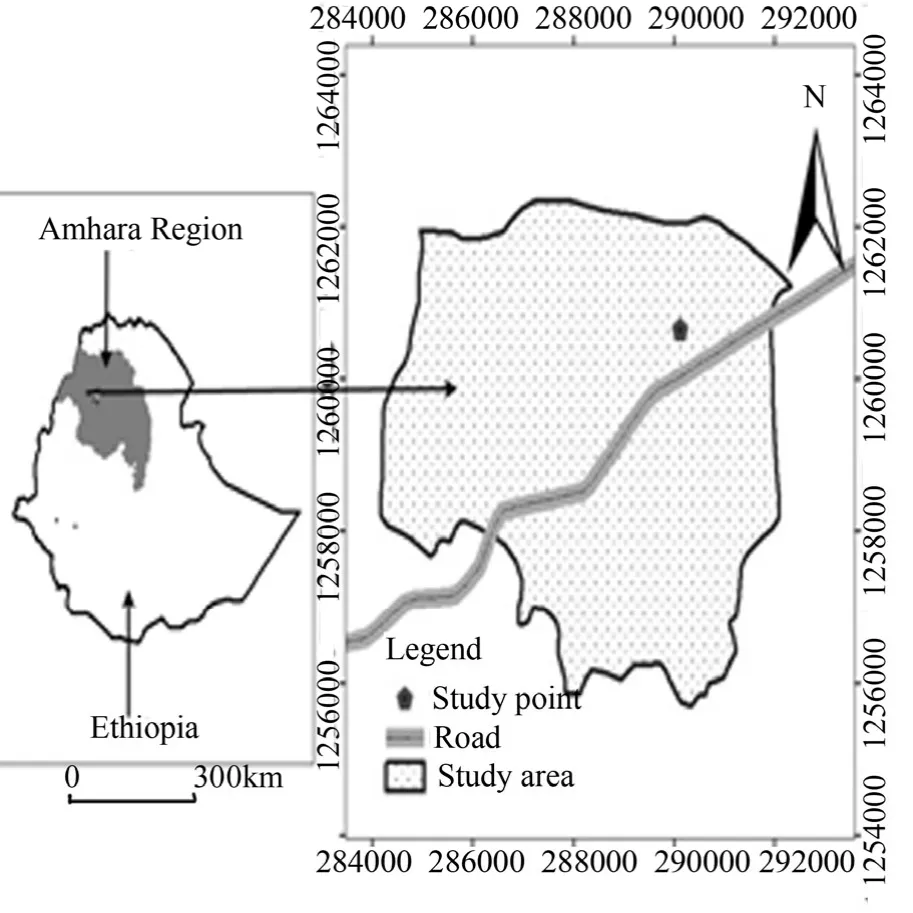
Fig. 1: Map of Ethiopia showing the study area.
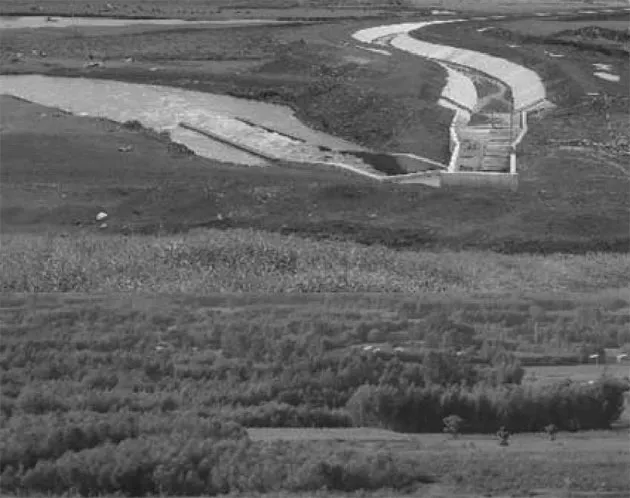
Fig. 2: Partial view of Koga irrigation and watershed management area.
Study farms and planting of crops
Clear-felled E. camaldulensis stands (hereafter referred to as clear-felled), which replaced crop farmlands were chosen to examine whether they could be reused for annual crop production despite the perceived deterioration of productivity caused by eucalypt stands. The stands were in the first coppice of trees and the rotation age ranged from 5 to 6 years. They were manually weeded once during stand establishment and no fertilizer or herbicides were used. Stand ages were 7−11 years and stand densities ranged from 19,500 to 22,000 individuals·ha-1(Table 1). For comparison, adjacent farmlands, which were continuously used for crop production (hereafter referred to as croplands) were included in the study. Both clear-felled stands and croplands had similar land-use history prior to afforestation.The test crops for this study were barley and finger millet. Barley was planted during 15−25 June 2011 and harvested around the end of November 2011. It was fertilized with 100 kg·ha-1DAP (Di-Ammonium phosphate: a water soluble compound fertilizer applicable to the nitrogen and phosphorous needs of various crops) and 25 kg·ha-1Urea (A white crystalline solid containing nitrogen which is used widely as a nitrogen fertilizer) at planting time. Finger millet was sown between 20 June and 10 July 2011 and harvested towards the end of November 2011. It was fertilized with 150 kg·ha-1DAP at planting date.
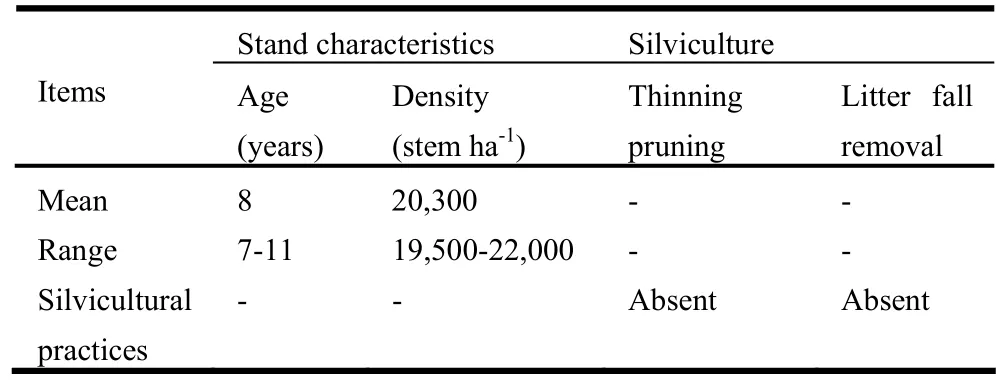
Table 1: Stand characteristics and silviculture of the clear-felled E. camaldulensis stands at the sampled farmlands in the study area.
Experimental design
Growth and yield of both test crops were surveyed on twelve paired farmlands (six for each crop), i.e. a total of twenty four experimental farmlands, each consisting of clear-felled and adjacent cropland with similar management practices (land preparation, sowing date, fertilizer application, weeding intensity) and topography (slope and elevation). The farmland study sites had an average size of 0.27 ha. At each farmland site, three plots of 4 m × 5 m were demarcated at randomly selected locations. Three subplots of 2 m2each were randomly chosen per plot for yield and growth measurements. The experimental design was completely randomized block design with farmlands as replicate blocks.
Data collection and analyses Growth in height and dry matter production were estimated nine weeks after sowing for barley and twelve weeks after sowing for finger millet. For both crops, eight plants from each subplot (n = 72) were randomly chosen for measurement of height. Plant height was measured with a meter ruler from the ground level to the uppermost extended leaf tip. At the same time, a 1 m2area from each subplot was carefully uprooted and separated into belowground and aboveground parts and oven-dried at 80 °C for 72 hours to estimate belowground and aboveground dry matter production. At crop maturity, the subplots (the remaining 1 m2) were harvested by hand at ground level and, then, grains were sun-dried and dry grain weight values were converted to tons per hectare.
Thirty farmer respondents who were growing the test crops or other crops in their clear-felled stands were chosen for interview. We used a semi-structured questionnaire to solicit from farmer respondent’s detailed information regarding the effects on soil fertility and growth and yield of crops of reuse of former eucalypt plantations. Farmers were asked the following questions: What changes did you observe in the growth of agricultural crops grown on the clear-felled stands and croplands? Did clear-felled stands or croplands give higher yield of agricultural crops? Did you perceive that replacing farmlands with eucalypts increased soil fertility? What were your previous perceptions about the effects of eucalypts planted on farmlands suitable for annual crop production?
All statistical analyses were carried out using ANOVA (SPSS Version 16). Since there were no significant variations between farmlands with the same land-use, data were pooled and Students t-test was used to identify differences in growth and yield of the agricultural crops between land-use types (clear-felled versus adjacent croplands). Differences were considered significant at p<0.05.
Results
Plant height and dry matter production
Land-use had significant effects on the growth of finger millet and barley. Averaged over all farmlands, both crops were significantly (p <0.001) taller (Fig. 3) and had significantly (p <0.01) higher biomass production (Table 2) in clear-felled stands than in croplands. The mean plant heights of finger millet and barley were (109.7±0.45) cm and (115.6±0.51) cm in clear-felled stands and 91.5±1.14 and 103.7±0.52 cm in cropland, respectively. The mean aboveground dry matter production of finger millet and barley was (20.76±0.48) and (6.36±0.06) t·ha-1in clear-felled stands and (13.96±0.37) and (4.34±0.06) t·ha-1in cropland, respectively. Finger millet and barley plants cultivated on the clear-felled stands had mean belowground dry matter production of (2.16±0.06) and (0.63±0.005) t·ha-1, compared with (1.36±0.04) and (0.47±0.008) t·ha-1belowground dry matterproduction on croplands, respectively.

Table 2: Effect of land use change on dry matter production (mean +SE) of barley and finger millet.
Crop yield
Land-use had significant (p <0.001) effects on yield of finger millet and barley (Fig. 3). Mean yields of both crops were significantly lower in the croplands (mean = 2.31±0.24 t·ha-1for finger millet and 1.97±0.03 t·ha-1for barley) than in clear-felled stands (mean = 3.27±0.31 t·ha-1for finger millet and (2.91±0.02) t·ha-1for barley).
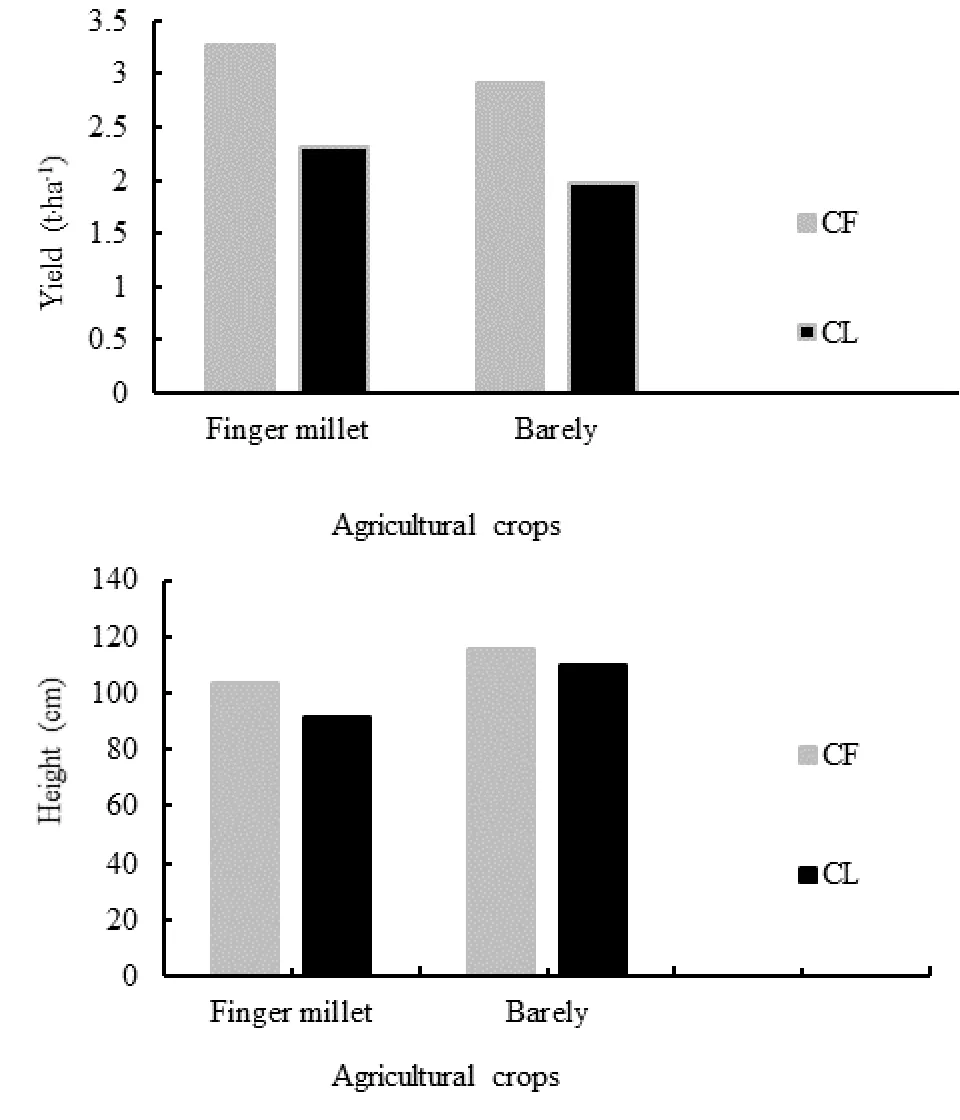
Fig. 3: Effect of land use change on height growth and grain yield of barley and finger millet (CF: clear-felled stands, CL: croplands).
Farmers’ perceptions
All farmer responses indicated higher growth and yield of finger millet and barley in clear-felled stands than in croplands (Table 3). Farmers thought that afforesting farmlands with eucalypts increased crop productivity by improving soil fertility, a position that differed from their previous perception that eucalypts degraded productive land suitable for annual food crop production (Chanie et al. 2013).
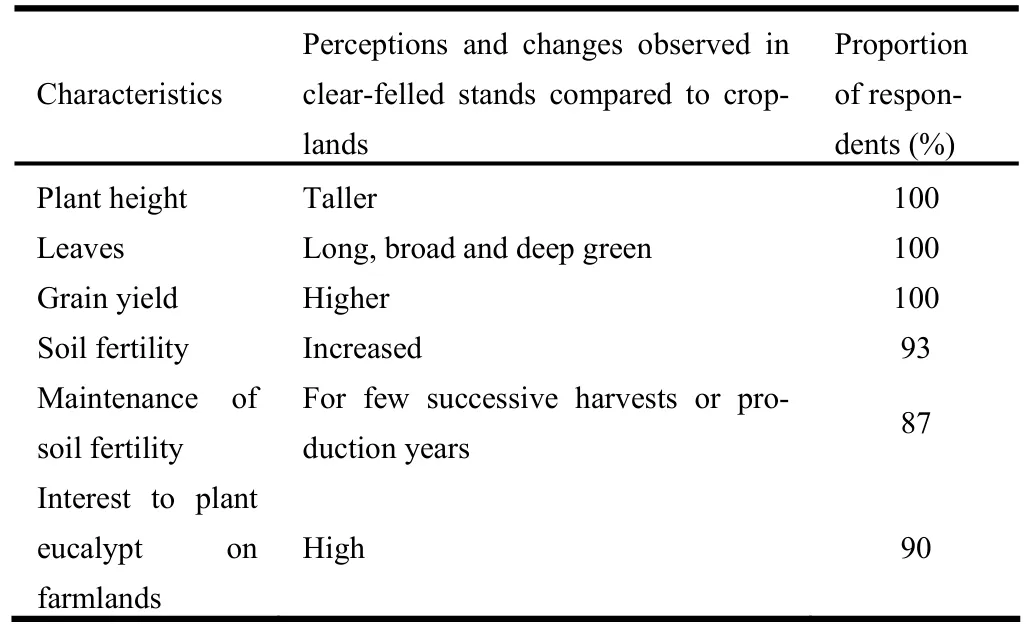
Table 3: Farmers’ perception and their observation on the effect of land use change on soil fertility as well as growth and yield of barley and finger millet as stated by respondents in the study area (n = 30).
Discussion
After five successive annual crop harvests, farmlands reclaimed from eucalypt stands increased growth and grain yield of finger millet and barley. Greater growth and yield after five successive annual harvests suggests that soil conditions did not deteriorate in farmlands reclaimed from eucalypt plantations. Our results are contrary to findings from previous studies. For example, El-khawas and Shehata (2005) and Forrester et al. (2006) reported accumulation of phytotoxins in soils under eucalypt plantations and resulting soil degradation and loss of soil productivity. Gindaba (2006) even proposed to discourage planting eucalypts on farmlands owing to long term site deterioration. Farmers in the study area also feared that the productivity of the reclaimed farmlands would not continue after a few successive harvests (Table 3). Their fear was influenced by their past perception that eucalypt trees were exhausting the once productive land (Chanie et al. 2013).
Previous reports from the highlands of Ethiopia revealed increased soil nutrient status and organic carbon in sites planted to eucalypts. Lemma et al. (2006) found that total soil organic carbon increased to nearly pre-deforestation levels in Eucalyptus grandis plantations during 20 years of establishment, after 20 years of cultivation and 35 years of pasture. Hailu (2002) also reported improvement in total soil N following land use changes from cropland to eucalypt plantations in the highlands of Ethiopia. Surprisingly, Alem et al. (2010) found improved soil nutrients and total carbon in E. grandis plantation compared with adjacent submontane rainforest in southwestern Ethiopia. Planting farmlands with eucalypts can improve soil productivity through translocation of nutrients from deeper horizons to the soil surface (Tchienkoua and Zech 2004). Moreover, farmers in Koga watershed did not collect litter fall and this might have contributed to increased crop productivity. Guo et al. (2006) reported import of up to 24% total N uptake to the soil surface via litter fall in short rotation eucalypt forests. Gindaba (2003) recorded lower soil N and P concentrations 10 m distant from theedge of the canopy as compared to beneath the canopy where litter fall accumulated.
In the croplands, however, farmers collected crop residue for animal fodder, construction (as a component for making mud), fuel and sale (own personal observation and communication). This practice would certainly lead to loss of soil fertility in the agricultural field by reducing recycling of nutrients to the soil surface. According to Hailu (2002), potential macronutrient removals from the soil surface through harvesting of agricultural crops can exceed removals through wood biomass of eucalypt plantations. Crop residue removal would, therefore, contribute to the reduction of growth and yield of barley and finger millet in continuously cultivated croplands.
Thirty farmer respondents also witnessed increased crop productivity in the farmlands reclaimed from eucalypt stands. The respondents cultivated various crops such as maize, potato, finger millet and barley. According to their responses, growth and yield of barley and finger millet on the clear-felled stands were greater than on adjacent croplands. About 90% of the respondents indicated that because of improved productivity of farmlands reclaimed from eucalypt stands and high economic return of eucalypt cultivation on farmlands, they were interested to increase planting of eucalypts on their farmlands. These farmers noted that increased costs of agricultural inputs especially chemical fertilizers and improved seeds, mounting shortages of wood for fuel and construction, and high labor costs had all contributed to shifting their interest toward eucalypt farming. Besides the high economic return from eucalypt farming, the increased interest of farmers to plant eucalypts could also impact climate change mitigation through the removal of carbon from the atmosphere (Prasad et al. 2012) and fossil fuel substitution (Calfapietra et al. 2010).
Farmers in the study area previously perceived that eucalypt trees were exhausting the once productive land (Chanie et al. 2013) so they were not interested to accept farmlands afforested with eucalypts during land redistribution in 2009 following the irrigation program. Now their perception has changed and they prefer stands afforested with eucalypts for food grain production. However, they were not yet sure whether farmlands reclaimed from eucalypt stands would remain productive for relatively long time periods compared with continuously cultivated croplands.
Conclusions and recommendations
Generally, the data collected in the field and farmers’ responses showed increased crop productivity in the clear-felled stands suggesting that farmlands that had been converted into eucalypt stands can be reclaimed for annual crop production. However, the controversy on eucalypts, especially their planting on farmlands, continues. This calls for further studies of a wider range of Eucalyptus species, site conditions, management practices, market conditions and cost of removing stumps. Results of broader studies would help resolve controversies of land-use transformation using eucalypts. This is important because eucalypt plantation forestry has played and continue to play a significant role in improving the livelihoods of rural communities, poverty reduction, restoration of degraded lands and reducing the pressure on remnant native forests in the highlands of Ethiopia (Hailu 2002; Lemenih and Teketay 2004; Lemma et al. 2006; Kelemu and Tadesse 2010; Zegeye 2010). Moreover, carbon stocks of short rotation eucalypt farm forestry systems in the study area need to be evaluated because these can enhance mitigation of climate change through sequestration of atmospheric carbon (Prasad et al. 2012).
Acknowledgements
The work was financed by Bahir Dar University Research and Community Service. We would like to thank MenaleWondie for generating a map of the study area.
Adimassu Z, Kessler A, Yirga C, Stroosnijder L. 2010. Mismatches between farmers and experts on Eucalyptus in Meskan woreda, Ethiopia. In: L Gil, T Wubalem, E Tolosana and R López (eds), Eucalyptus Species Management, History, Status and Trends in Ethiopia. Addis Ababa: ETH-CANA publishing company, pp.146−159.
Ahmed R, Hoque R, Hossain MK. 2008. Allelopathic effects of leaf litters of Eucalyptus camaldulensis on some forest and agricultural crops. Journal of Forestry Research, 19(1): 19–24.
Alem S, Woldemariam T, Jindrich PJ. 2010. Evaluation of soil nutrients under Eucalyptus grandis plantation and adjacent sub-montane rain forest. Journal of Forestry Research, 21(4): 457–460.
Calfapietra C, Gielen B, Karnosky D, Ceulemans R, Mugnozza GS. 2010. Response and potential of agroforestry crops under global change. Environmental pollution, 158: 1095–1104.
Chanie T, Collick AS, Adgo E, Lehmann CJ, Steenhuis TS. 2013. Eco-hydrological impacts of Eucalyptus in the semi-humid Ethiopian Highlands: the Lake Tana Plain. Journal of Hydrology and Hydromechanics, 61(1): 21–29.
El-Khawas SA, Shehata MM. 2005. The Allelopathic Potentialities of Acacia nilotica and Eucalyptus rostrata on Monocot (Zea mays L.) and Dicot (Phaseolus vulgaris L.) plants. Biotechnology, 4(1): 23–34.
FAO. 2001. World Soil Resources Reports 94, Rome: FAO Publishing and Multimedia Service, pp. 171–176.
Forrester DI, Bauhus J, Cowie AL, Vanclay JK. 2006. Mixed-species plantations of Eucalyptus with nitrogen-fixing trees: a review. Forest Ecology and Management, 233: 211–230.
Gindaba J. 2003. Water and nutrient relations of selected tree species of Ethiopia. PhD dissertation. Department of forest science, Stellenbosch University, South Africa, p. 180.
Gindaba J. 2006. Overview of water and nutrient relations of Eucalyptus and deciduous tree species and implications for their use in land rehabilitation. Journal of the Dry lands, 1(1):15–25.
Guo LB, Sim RH, Horne P. 2006. Biomass production and nutrient cycling in Eucalyptus short rotation energy forests in New Zealand: litter fall and nutrient return. Biomass and Bioenergy, 30(5): 393–404.
Hailu Z. 2002. Ecological impact evaluation of Eucalyptus plantations in comparison with agricultural and grazing land use types in the highlandsof Ethiopia. PhD dissertation. Vienna University of Agricultural Sciences, Vienna, p. 271.
Jagger P, Pender J. 2003. The role of trees for sustainable management of less-favored lands: the case of Eucalyptus in Ethiopia. Forest Policy and Economics, 5(1): 83–95.
Jenbere D, Lemenih M, Kassa H. 2012. Expansion of eucalypt farm forestry and its determinants in Arsi Negelle District, south central Ethiopia. Small-scale Forestry, 11(3): 389–405.
Kelemu K, Tadesse W. 2010. Analysis of Eucalyptus role in the livelihoods of rural households. In: L Gil, T Wubalem, E Tolosana and R López (eds), Eucalyptus Species Management, History, Status and Trends in Ethiopia. Addis Ababa: ETH-CANA publishing company, pp. 53–61.
Kidanu S, Mamo T, Stroosnijder L. 2004. Eucalyptus–wheat interaction on Ethiopian Nitisols. Agricultural Systems, 80(2): 151–170.
Kidanu S, Mamo T, Stroosnijder L. 2005. Biomass production of Eucalyptus boundary plantations and their effect on crop productivity on Ethiopian highland Vertisols. Agroforestry Systems, 63(3):281–290.
Lemenih M, Olsson M, Karltun E. 2004. Comparison of soil attributes under Cupressus lusitanica and Eucalyptus saligna established on abandoned farmlands with continuously cropped farmlands and natural forest in Ethiopia. Forest Ecology and Management, 195: 57–67.
Lemenih M, Teketay D. 2004. The role of plantation forests in fostering restoration of native flora and fauna at degraded sites in Ethiopia. Ethiopian Journal of Biological Sciences, 3(1): 81–111.
Lemenih M. 2010. Growing Eucalyptus by smallholder farmers in Ethiopia. In: L Gil, T Wubalem, E Tolosana and R López (eds), Eucalyptus Species Management, History, Status and Trends in Ethiopia. Addis Ababa: ETH-CANA publishing company, pp. 91–103.
Lemma B, Kleja DB, Nilsson I, Olsson M. 2006. Soil carbon sequestration under different exotic tree species in the southwestern highlands of Ethiopia. Geoderma, 136(3): 886–898.
Lisanework N, Michelsen A. 1993. Allelopathy in agroforestry systems – the effects of leaf extracts of Cupressus lusitanica and three Eucalyptus species on four Ethiopian crops. Agroforestry Systems, 21(1): 63–74.
Michelsen A, Lisanework N, Friis I. 1993. Impacts of tree plantations in the Ethiopian highland on soil fertility, shoot and root growth, nutrient utilization and mycorrhizal colonization. Forest Ecology and Management, 61: 299–324.
Pohjonen V, Pukkala T.1990. Eucalyptus globulus in Ethiopian forestry. Forest Ecology and Management, 36: 19–31.
Prasad JVNS, Srinivas K, Rao CS, Ramesh C, Venkatravamma K, Venkateswarlu B. 2012. Biomass productivity and carbon stocks of farm forestry and agroforestry systems of Leucaena and Eucalyptus in Andhra Pradesh, India. Current Science, 103(5): 536–540.
Tchienkoua M, Zech W. 2004. Organic carbon and plant nutrient dynamics under three land uses in the highlands of West Cameroon. Agriculture, Ecosystems and Environment, 104: 673–679.
Zegeye H. 2010. Environmental and socioeconomic implications of Eucalyptus in Ethiopia. In: L Gil, T Wubalem, E Tolosana and R López (eds), Eucalyptus Species Management, History, Status and Trends in Ethiopia. Addis Ababa: ETH-CANA publishing company, p.184–205.
DOI 10.1007/s11676-014-0483-9
Project funding: This work was financially supported by Bahir Dar University Research and Community Service.
The online version is available at http:// www.springerlink.com
Bahir Dar University, P. O. Box 1817, Bahir Dar, Ethiopia.
E-mail: desalegn64@yahoo.com
Demel Teketay
Botswana College of Agriculture, Department of Crop Sciences and Production, Private Bag 0027, Gaborone, Botswana.
E-mail: dteketay@yahoo.com
Corresponding editor: Zhu Hong
杂志排行
Journal of Forestry Research的其它文章
- Full length cDNA cloning and expression analysis of annexinA2 gene from deer antler tissue
- Carbon stock in Korean larch plantations along a chronosequence in the Lesser Khingan Mountains, China
- Biomass accumulation and nutrient uptake of 16 riparian woody plant species in Northeast China
- Cloning and sequence analysis of nine novel MYB genes in Taxodiaceae plants
- Genetic and morphological variation in natural teak (Tectona grandis) populations of the Western Ghats in Southern India
- Improved salt tolerance of Populus davidiana × P. bolleana overexpressed LEA from Tamarix androssowii
